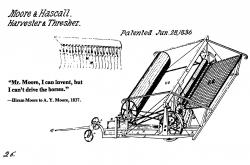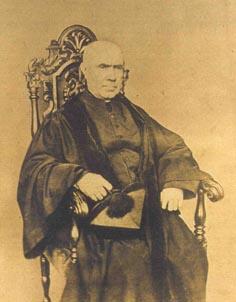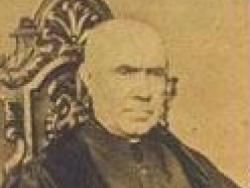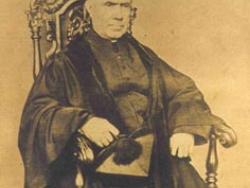A Historic Landmark of Agricultural Engineering in 1834 Near the Village of Climax, Michigan, Hiram Moore and John Hascall Built and Put Into Practical Use the First Successful Grain Combined Harvester - Thresher Which was Patented June 28, 1836. This Achievement was a Significant Contribution to the Development of American Agriculture Dedicated by the American Society of Agricultural Engineers 1978
1836

YearAdded:
1978

A pioneer in the development of electrical science, Nicholas Joseph Callan was born on 22 December 1799 in Darver, Ireland. He started the priesthood at Navan Seminary, and continued his studies at St. Patrick’s College Maynooth, where he studied natural and experimental philosophy under Dr. Cornelius Denvir. After his ordination as priest in 1823, Callan pursued his doctorate in divinity in Rome, where he became acquainted with Galvani and Volta’s work in the study of electricity, and recognized the potential to put it to practical and commercial use with powerful batteries.

A pioneer in the development of electrical science, Nicholas Joseph Callan was born on 22 December 1799 in Darver, Ireland. He started the priesthood at Navan Seminary, and continued his studies at St. Patrick’s College Maynooth, where he studied natural and experimental philosophy under Dr. Cornelius Denvir. After his ordination as priest in 1823, Callan pursued his doctorate in divinity in Rome, where he became acquainted with Galvani and Volta’s work in the study of electricity, and recognized the potential to put it to practical and commercial use with powerful batteries.
YearAdded:
Image Credit: Public Domain; Produced prior to 1/1/1923Image Caption: Callan's Pioneering Contributions to Electrical Science and TechnologyEra_date_from: 1836
2006
Innovations

A pioneer in the development of electrical science, Nicholas Joseph Callan was born on 22 December 1799 in Darver, Ireland. He started the priesthood at Navan Seminary, and continued his studies at St. Patrick’s College Maynooth, where he studied natural and experimental philosophy under Dr.… Read More

A pioneer in the development of electrical science, Nicholas Joseph Callan was born on 22 December 1799 in Darver, Ireland. He started the priesthood at Navan Seminary, and continued his studies at St. Patrick’s College Maynooth, where he studied natural and experimental philosophy under Dr.… Read More

A Historic Landmark of Agricultural Engineering in 1834 Near the Village of Climax, Michigan, Hiram Moore and John Hascall Built and Put Into Practical Use the First Successful Grain Combined Harvester - Thresher Which was Patented June 28, 1836. This Achievement was a Significant…
Read More

